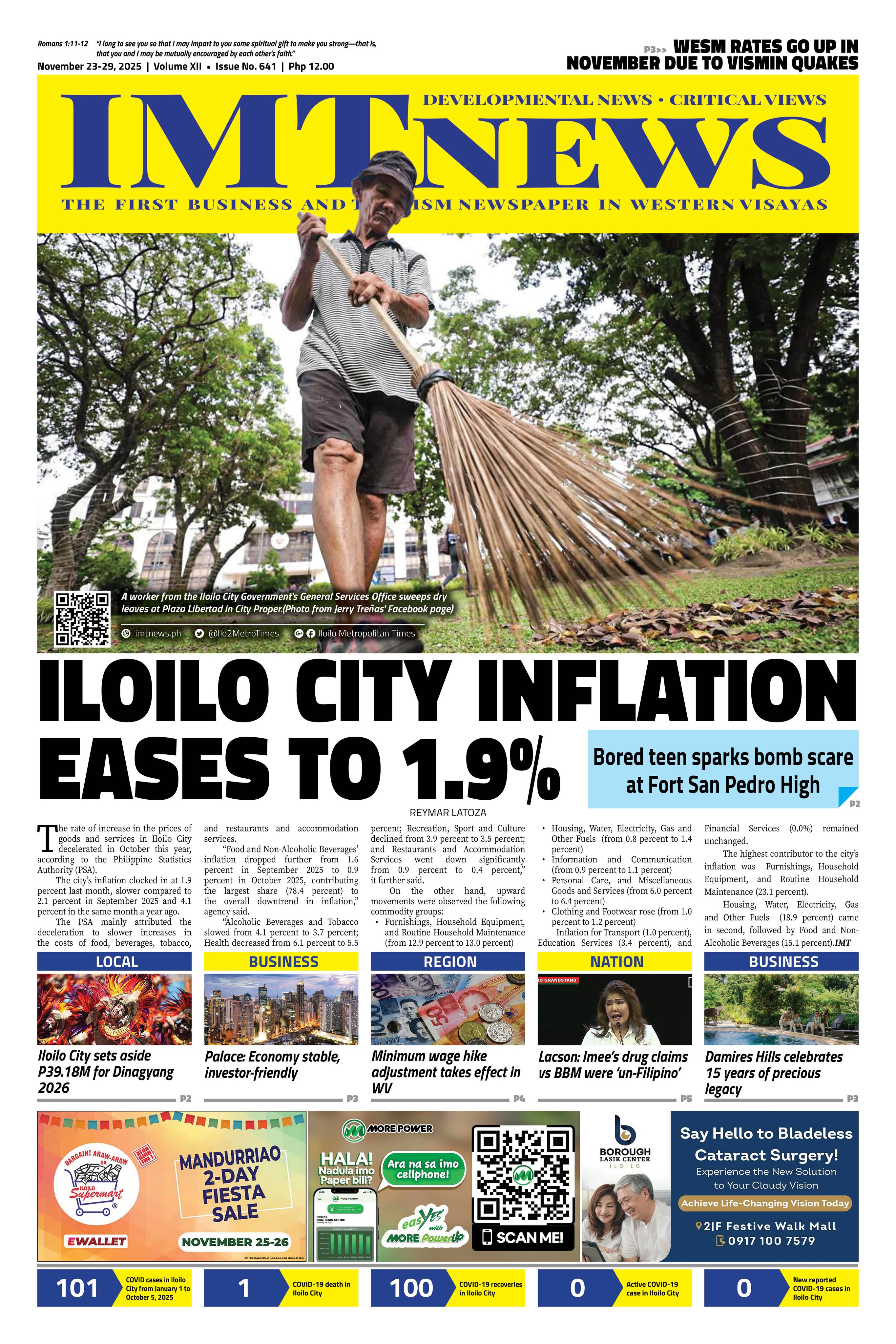In a cozy 7th floor hall of the University of San Agustin CPMT Building, while the city of Iloilo simmered in July heat, a soft-spoken priest posed a piercing insight: artificial intelligence may never have a soul, but it surely can be persuasive. Rev. Gary McCloskey of the Order of St. St. Augustine, speaking at the inaugural Augustinian International Research Conference (AIR-C) 2025, did not sound alarmist. He sounded awake. With the wisdom of St. Augustine and the caution of a scholar who understands both algorithms and ethics, he framed the age of AI not as a battle of humans versus machine, but a test of character with machine.
In the inaugural day of the three-day conference, talk after talk echoed a singular truth: we have entered a co-creative era. Artificial Intelligence, particularly models like ChatGPT, is not merely a glorified calculator or a digital substitute to a thesaurus. It is something more layered, more participative, more unpredictable. Still, and this matters, it is not sentient. Not yet—at least not like humans, as many AI theorists would say. It does not ponder, choose, or reflect like a human. It responds. It predicts. It mirrors. But that mirror, as Fr. McCloskey stressed, sometimes “hallucinates.” And that hallucination, if unexamined, can become our collective truth.
What makes AI profound, and perhaps disruptive, is that it sits somewhere between extension and companion. It begins as a tool, no doubt—typed prompts, data-trained outputs, and logic-chained responses. Like a trusted kitchen knife, AI can help slice through ideas—but only if you know what dish you are cooking. I know a college professor who used ChatGPT to co-develop a lesson on climate resilience. The final output was not just algorithmic—it reflected her pedagogy, her community’s lived experience, and yes, some quirks from the machine. It was human-filtered and machine-assisted, in tandem.
Yet let us be clear-eyed. AI, despite its poetry and potential, remains a construct of human design. It cannot discern justice, let alone the lived pain behind social injustice, or feel empathy, much so the quiet struggles of a student left behind. It does not choose to replicate or inspire—it simply mirrors what it has been fed. AI starts with us—our data, our design, our intent, our prompt. So we need to lead, not just follow. This is particularly crucial in a nation where access, ethics, and equity continue to compete for resources.
There is real promise in AI democratizing access. According to Microsoft’s 2025 Work Trend Index, 83 percent of global leaders believe AI will help early-career professionals take on more complex work. In our country, where rural students often lack quality textbooks, AI can help bridge gaps. A public high school teacher in Capiz shared how he used ChatGPT to help his students debate social issues in English. The tool provided scaffolds, not scripts. And those scaffolds lifted confidence, especially among those who were usually silent.
But the refrain remains: trust, test, and think. Rev. McCloskey’s acronym HOPE—Humble Heart, Obedience to Truth, Pointing to Reflective Learning, Expressing Wisdom Clearly—grounds this beautifully. These four pillars remind us that tools, no matter how advanced, require ethical framing. This is not nostalgia for chalkboards. It is discernment. While digital eloquence is ubiquitous, St. Augustine taught us that wisdom always has a greater impact.
Co-creation gives us a better way forward. It does not glorify AI or fear it—it reminds us that between prompt and output lie both surprise and responsibility. Used this way, AI tools are not shortcuts—they are scaffolds. The real learning, creating, and deciding still rests with the human. A designer sketches a disaster-ready Guimaras in Midjourney, then refines it with real terrain data. A teacher in Aklan drafts lessons with ChatGPT, then rewrites them with her students’ own stories. An Ilongga entrepreneur tests slogans in Canva Magic Write, but keeps only what reflects her roots. A Negrense student rephrases with QuillBot, then adds her family’s voice and context in Hiligaynon. A civil engineer uses Fusion 360 CAD to model safer bridges, then grounds them in local needs and parameters. A college professor at a research plenary uses an AI note-taker to capture key insights, then weaves in her reflections for class. A student presenter uses Gamma.app to build slides, but tells the story in her own words. And a Boracay vlogger edits in CapCut AI, then layers in raw clips and narration—the final cut feels real, not robotic.
This blurred authorship unsettles many. Rappler Desk Editor and tech journalist Victor Barreiro Jr. has written about growing concerns around AI and visual plagiarism. Who owns an idea when the input is human but the output is algorithmic? AI might generate—but it is still the human who must decide what is fair, true, or off-limits. Perhaps it is like hiring a brilliant mentor to help sharpen your work—only this one is digital, tireless, and often pro bono.
Regulations help, but real change begins when schools teach not just usage, but discernment. Not just to produce more efficiently, but to reflect more deeply. Let our learners ask: Why did this response sound biased? Whose voice is missing here? What assumptions might this tool be reinforcing? Knowing when to stop and ask, “Is this right?” and “Is this just?”—and perhaps also, “Does this reflect who I am?” and “Who might this leave behind?”—that is the real skill.
Our creativity lives in the middle ground. We take what is global, add our flavor, and tell it with truth and wit. AI can amplify that gift, if stewarded well. In the hands of a thoughtful teacher, AI becomes a springboard. In the hands of an uncritical user, it can easily become a shortcut with limits.
Let us not romanticize AI. Like any strong tool, it has trade-offs—it uses power, borrows from messy data, and sometimes blurs more than it sharpens. But it all still points back to us.
There was something quietly powerful about Rev. McCloskey’s final note. He did not call for a digital exorcism, nor a blind embrace. He asked for humility. For truth. For wisdom. In a world drowning in performance and quick fixes, that call is radical. And perhaps, exactly what we need.
Because in the end, it is not about whether AI is just a tool or already a co-creator. The real test is what kind of creators we become when we work with it.
And that, truly, is a question only humans can answer.
Doc H fondly describes himself as a “student of and for life” who, like many others, aspires to a life-giving and why-driven world grounded in social justice and the pursuit of happiness. His views do not necessarily reflect those of the institutions he is employed or connected with.







